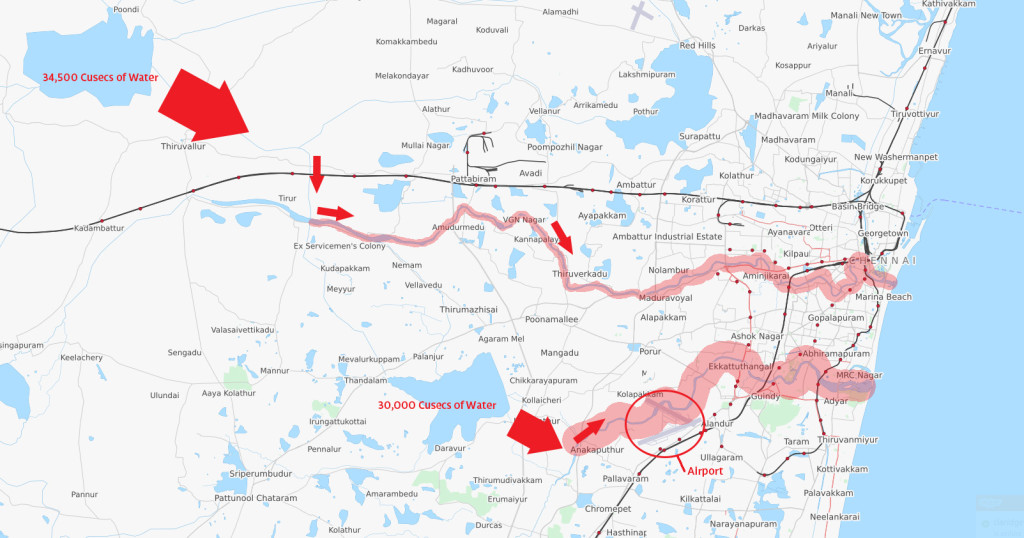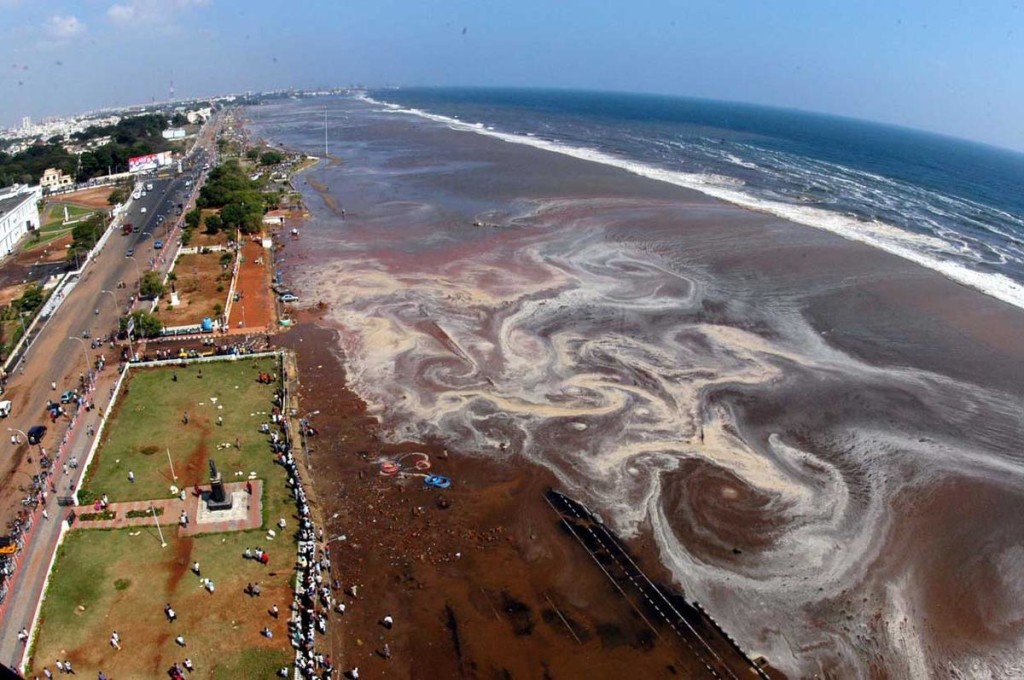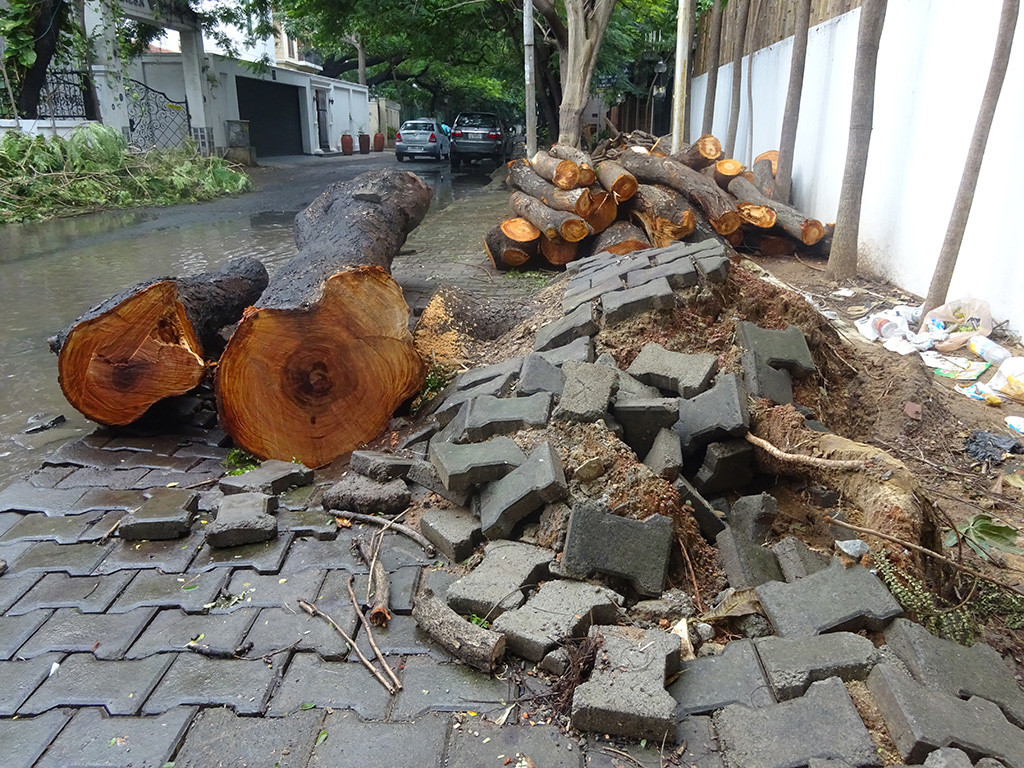It’s been a couple of weeks since my blog post on what happened before, during and immediately after the Chennai rains. What was meant as an update for family and friends on what was going on (OK, mostly to reassure my Mum, who does worry so), seemed to have captured the attention of Chennaites around the world.
There has been no let up in the relief efforts of people all across Chennai. While now we can say that with a very few exceptions, most people have been rescued from their homes or the water has receded far enough for them to get out, rehabilitation is in full swing.
Everyone Likes to Point Fingers
There has been a huge amount of discussion on the news, on social media and at coffee shops about what went wrong, why did the city flood so badly?
Because it rained, duh.
It wasn’t just ordinary rain though. It was like mother nature was making a determined effort to relocate the Bay of Bengal a few dozen kilometers to the West. There was so much of it. In November, Chennai saw over one metre of rainfall. To give that some kind of perspective, the UK, known for its dreary grey skies, receives an average of 0.85 metres of rain per year.
Added to that, on December 2nd, parts of the city recorded 0.47 metres of rain. That’s 47cm in just 24 hours. I don’t know if there’s any city in the world that can cope with that much rain having just come off the back of a period that saw over one metre of rain.
There’s also lot of discussion about a lack of urban planning and a flagrant disregard for the environment and water bodies when it comes to the city development. However, given the amount of rain that the city received, I don’t know how different the situation could have been.
Why The City Flooded
One of the main causes of the flooding was when water was released from the reservoirs around the city. With the rain alone, the city suffered but the release of the water from the reservoirs was final nail in the coffin for the city.
The Adyar river, which was already swollen from the inflow saw an additional 30,000 cusecs of water being released into it. To most of us, 30,000 cusecs of water has no meaning but one Google calculator tells me that this is 850,000 litres of water every single second.
In other words enough water to fill an Olympic sized swimming pool was being released every 3 seconds.
The Rivers Burst Their Banks
Many people report going to bed on the 2nd December with the streets flooded but the rain easing up. When they woke up in the morning, the flooding had reached many parts of the city. The release of the water and the overflowing of the Adyar river meant storm water channels were unable to discharge and so the water just kept backing up, flooding all the areas.
 (As well as showing the direction of the flood water, the map above proves I wasn’t hired for my Photoshop skills)
(As well as showing the direction of the flood water, the map above proves I wasn’t hired for my Photoshop skills)
The map above shows the two reservoirs that released the water in to the two rivers that run through Chennai. The reservoir in the top left is called Poondi reservoir and the media has reported that it released over 34,500 cusecs of water in to the River Cooum. The reservoir in the lower middle part of the map is the Chembarambakkam reservoir and it flows into the River Adyar. The media reported that this reservoir released around 30,000 cusecs of water. The red highlighted areas show the path of the two rivers and the areas of the city that flooded as a result (although not all areas along the rivers flooded and many other areas in the city also flooded). See how Chennai airport is built right on top of the Adyar river.
Some reports in the media state that the decision to release all this water from the reservoirs was made at 10pm, too late to put out any warning to the people in the flood danger zones. Had they released water at a lower rate starting earlier in the day, no doubt the city would still have seen the level of flooding it did, but perhaps there would have been more time for an evacuation.
However, the Chief Secratary of Tamil Nadu (not to be confused with Amma, the Chief Minister of TN!) categorically denies any reports of incompetence and stated that in fact 30,000 people were evacuated from the low-lying areas.
The People’s Rescue
In my previous Chennai floods blog post, I wrote about how the people of Chennai came together as a makeshift citizen rescue force. Curious as to how the city reacted when the city last flooded in 2005, I asked my local friends what the response was like back then. They all said that it was the Government that provided all the relief. They didn’t know how they could help even if they wanted to. There was little to no information about citizens getting involved in supplying help and aid – although I’m sure there were.
At the very end of 2004, the tsunami decimated the coastline of Tamil Nadu. Again, the relief efforts were exclusively provided by Government agencies and large NGOs.
 The Tsunami that hit in 2004 caused large-scale destruction along the coast.
The Tsunami that hit in 2004 caused large-scale destruction along the coast.
Photo Credit: Reuters/Babu
This time around, there were people sitting in other cities, even in other countries that were helping to aid relief efforts. The difference is that the penetration of mobile Internet and in particular social media, has made sharing information almost seamless. It came together to form the People’s Rescue of Chennai.
If there’s any argument for speeding up and ensuring every citizen of India has access to the Internet, surely this is it. If a city can help itself with the current levels of Internet access, imagine what it could do when everyone is online and sharing information.
Getting The City Back on its Feet
Two weeks on and with all the urgent and immediate help given to those affected by the floods, the aid requirements turn to rehabilitation.
 Fallen trees, stagnant water, broken pavements, garbage and sludge everywhere. It all had to be cleaned up.
Fallen trees, stagnant water, broken pavements, garbage and sludge everywhere. It all had to be cleaned up.
The city itself is also getting back on its feet. There is still a lot of standing water in some neighbourhoods. Either the drains are blocked or there’s just nowhere for the water to flow to. One of the main roads in the city, TTK road, was completely dug up as temporary channels were made for the water to drain away. Along the Adyar river, a trail of destruction has been left. The belongings of countless thousands of people are strewn along its banks, not to mention all the garbage washed out by the fast flowing waters.
During the floods, there were countless reports on social media about schools, orphanages, refuge centres and other institutions being cut off and in dire need of assistance. Aid and supplies were distributed to these places and people even rescued by boat if needed.
Now though, these organizations need to take stock of the damage caused by the flooding. Since many of them relied on the charitable donations of businesses and individuals, any losses are going to be sorely felt.
One unforeseen yet entirely good outcome of all this sharing on social media is an awareness among people of just how many charitable organizations might be in their local area.
In the last two weeks I found out that there is an orphanage that I pass every day to the office and a school for under-privileged girls that are deaf, blind or mute just minutes from where I live.
One Story Amongst Thousands
It was this school that I was asked to visit by a colleague sitting in Coimbatore. He had been coordinating relief efforts, putting people in touch with others, and rallying the people of Coimbatore to make supply runs on rented trucks. He had heard about this school in Nungambakkam and spoken to the principal about the damage.
During the flood, the grounds and ground floor classrooms were all completely submerged. The 600 or so girls were safe but fast running out of supplies – until the citizen rescue force turned up with aid.
As the water receded, the damage became clear. Classrooms with specialized equipment needed to be replaced, wooden furniture had to be thrown out, text books that were on the lower level shelves were ruined.
The worst affected were the sound proof rooms constructed for the deaf girls. These rooms used lots of padding to absorb all the sound. Unfortunately it absorbed all the water as well and all the rooms need to be gutted and rebuilt. All the sensory gardens were also completely ruined.
Where the flood water didn’t cause damage, rain water leaking into the buildings did. Computers, projectors and other classroom equipment all suffered from water damage.
- Special soundproof booths need to be stripped and rebuilt
- Books and classroom learning materials were damaged
- The entire ground flooded, this is several days after the rain stopped
- Specialised classroom equipment for the disabled girls needs to be replaced, along with the furniture
- The sensory gardens where the girls could use their other senses were washed away
- The school was submerged in as much as 5 feet of water, knocking out power and cutting off access.
The damage wasn’t just to equipment and furniture. Any building that flooded in Chennai saw massive amounts of grime and dirt left behind by the water. Across the city, a dark black mold is taking hold on the walls of buildings suffering from damp inside and out. All this creates extra work to ensure it’s removed before the students can be let back into the classrooms.
To get the school back on its feet, it needs around Rs 700,000 to Rs 1,000,000 (around $12,000 to $16,000). Since it’s a charity, it’s reliant upon the donations of the public and businesses to make this happen.
Of course, this is just one of many, perhaps hundreds of organizations that were affected by the floods. They all need help with rehabilitation.
Then there’s those individuals that need all the help they can get. One of the housekeepers in our office has pretty much lost everything. As the rain continued on the 2nd December, she diligently made sure they had plenty of supplies, buying a huge bag of rice. She also ensured everything was stored high up on shelves in case water entered her home. However, none of that was enough.
The water virtually submerged her home, ruining everything in it. Clothes, vital paperwork, home appliances, cooking equipment. Everything was damaged and had to be thrown out.
Again, this is by no means a unique story. It has been played out across all the areas that saw the most flooding. Insurance for your home is a luxury few can afford and even fewer take, so the cost of replacing anything that was damaged has to be met by the individual – or rely on the kindness of strangers.
Hope and Moving Forward
There’s still a lot of relief required. People already living on the breadline have lost homes and livelihoods. It’s also clear that with the distribution of money as aid, the Government needs to take a long hard look at itself as the distributor of alcohol in the state.
Fortunately, despite so much loss and anguish, I’m very positive about the outlook of the organizations and individuals that have been so badly affected. The people of Chennai will always step up to help those in need.
Yes… Good report. I do understand the effort needed…but I also understand the mindset of the people in Chennai. Although, there was such an out pouring of help in the last weeks from so many, many people, ufortunately, the enthusiasm will slowly go down… It always does in India…. We have seen it happen countless times before. There are always people ready to help but….after a while, politics and governments get involved and it becomes a hassle to help or to even come forward. I sincerely hope that, it does not happen this time. Nice update…do keep on writing, it gives us a clear outlook on the events, with us being here thousands of miles away…. 🙁